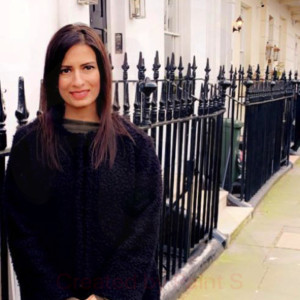Chapters
The purpose of Art and Design at the GCSE level is to help students build creative skills through learning and doing. Throughout this course, you'll explore various topics to develop imaginative and intuitive ways of working. You'll acquire knowledge and understanding of media, materials and technologies, societies and cultures. Your GCSE Art and Design curriculum touches on:
- art history
- the elements of art
- artistic skills
- art media
- the creative process
- creating a sketchbook
- building a portfolio
It goes without saying that GCSE Art and Design doesn't follow the same form as, say, GCSE Religious Studies does. You won't have to memorise a lot of information or formulate any theories. But you do have to know about art. How to create it, how to present it and how to preserve it. You might need additional prep work to thoroughly understand this course's concepts. You may also need to cast around for inspiration before planning your final piece.
So we have taken a look at the resources available on the internet. What follows is our list of the best resources for GSCE Art & Design. And then, we cover some other resources you might need as you progress through this course.

GCSE Art & Design Resources
When pondering this topic, we thought it a good idea to cover GCSE-specific study tools first. And then, we'll look at general art-and-design-oriented resources and a few academic pages to round things out. That way, you're not limited to just a handful of well-known outlets. Let's get things started now, by going over everyone's go-to GCSE support tools and what they offer you.
GSCE Bitesize Art & Design
The BBC’s Bitesize pages are an excellent starting point for those needing help with their GSCE Art & Design coursework and exams. The site covers practically everything you need to know to achieve top grades. You can go over the technical aspects of drawing, graphics, painting, photography and sculpture. Bitesize also provides vital information on this course's structure and assessment objectives.
The site’s creators acknowledge that creativity is essentially a subjective pursuit. Still, they stress that even the greatest artists find inspiration in other artists' work, even if they use different media. One Bitesize section, labelled Art & Design: Developing your ideas features a video on how successful GCSE students work to turn inspiration into art. It even shows how they prepare for their final exam.
Bitesize's Art and & Design page is both versatile and well-organised. You'll find three main areas for review, each with several sub-headers to dwell over. The top of each information page delivers a topic summary; at the page's bottom, you'll find a glossary of art-related terms. Bitesize also includes an ample gallery of art and architectural works.
Past Papers
As we mentioned earlier, GCSE Art & Design is not like other qualifications ordeals. For instance, GCSE Design & Technology candidates have a formal exam to sit at the end of their course, you won't. Thus, you'll have no past papers or marking schemes to download.
You should visit the AQA Art & Design page anyway. You need to go over the non-exam assessment (NEA) papers to know what's expected of you come time for you to satisfy your qualification's Component 2 requirements. Currently, the page contains seven PDF files. Each one outlines the specific requirements for a particular medium.
You'll find Examiner's Reports at the top of this list of downloadable PDF files. This 21-page document describes past students' performances; what they did well and what they did that cost them points. Students failing to meet the required minimum of two hours of supervised time is an example of such.
This summary of past Art students' performances is indispensable. Not only does it warn you of potential pitfalls that could cost you high marks but it critiques the whole course. For instance, one report describes the effect an overly-managed portfolio course had on students' creative drives. These reports are truly the best insight you could get for your GCSE Art & Design ordeal.
Student Art Guide
You've probably not run across this site during your standard scramble for GCSE revision tools. In fact, it is not strictly targeted to GCSE Art & Design candidates. Any student preparing for any type of qualifications, including GCSEs, will find value on this page. What might they have for you?
This site is designed to help art students excel in their GSCE Art & Design course. It includes free art teacher resources and articles on everything from time management to self-motivation. Clicking on their various menus, you'll find project ideas, technical advice, and works by other students. You can also learn about creating your own websites and discover career prospects within the art world.

GCSE Art & Design Commercial Sites
Unfortunately, the Art & Design GCSE isn't nearly as popular or renowned as GCSE Spanish, French or Physical Education. Websites abound for those subjects! But if we only drop the GCSE association, we can find plenty of sites that talk about creating art. Some share art freely and generously, too. Let's find a few of those outlets.
Julia Stubbs
This site doesn't look like much. It presents a brown background with a few links in a tiny, hard-to-read font. Layered atop that background is a compilation of exemplar material spanning eight years, from 2004 to 2016. Past GCSE Art & Design students created these works for their final exam.
Each student's name is a hyperlink to their work. Next to their name, you'll find their grade and point percentage. You may click on each student's name to visit a gallery of their work. Don't forget to check out the sketchbook entries at the lower right side of the page!
There is no better way to understand what excellent work looks like than by looking up posted sketchbooks. Talented students routinely post to Pinterest and other social networking sites. Past sketchbooks can also provide inspiration for how to present your work through the use of different calligraphy styles and page layouts.
YouTube
This platform hosts many videos particularly interesting to GSCE art students. You may search the site to find students showing their work, page by page. They narrate their work in loving detail while pointing out their less noticeable features. These vloggers also provide tips for meeting the professional-looking sketchbook requirement.
Some of the best advice provided include the importance of focusing on quality rather than quantity. These students aver that you should not be afraid to experiment and even make mistakes. That way, the examiners can see your process; the steps you've taken to create your works of art. They'll impress upon you that an excellent sketchbook doesn’t have to be tidy.
Your Paintings – Art
This excellent resource makes it possible for art lovers and students alike to discover the contents of the UK's National Collection of oil paintings. Search for information on the lives and work of thousands of artists, discover where you can view important artworks in person and find resources which are specifically aimed at schools. The guide to artistic styles and movements provides an excellent introduction to over 40 different artistic styles and movements.

Art Tutorial Resources
As you've signed up for GCSE Art & Design, there's a good chance you already know how to draw. But who says you can't improve your technique or learn new ones? And you may already have your favourite brand of pencils and pastels. But would it hurt to see what other artists deem their faves?

Muddy Colors
This website boasts an impressive catalogue of art-related blog posts that present artists' perspectives. They also feature a sizable gallery and an inspiration page where artists describe their processes. You can read about new techniques they've tried - some that worked well and others, not so much. Their video vault presents practically any art topic you could think of, from Thinking in 3D to a digital painting guide.
Tutsplus
Like Muddy Colors, Tutsplus is a treasure trove of artistic knowledge. Under their Tutorials tab, you may select the Design and Illustration category to pick up new drawing skills or learn how to manipulate photos with Photoshop. You can also learn how to create images with Adobe Illustrator.
The Guides tab offers further instruction on illustration and design. You might be interested in their how-to for drawing textures or pick up some of their painting tips. As I am incapable of rendering even a credible stick figure, I found their four-part series, How to Learn to Draw particularly engaging. Step by step, these posts take you from the basics - manual skills and precision, all the way through discovering your artistic style.
Class Clips – Art
This site, also set up by the BBC, is favoured by teachers and students alike, since it features an impressive array of clips that can be streamed in class. Find everything from ideas of how to shade, draw upside down or draw ‘the Rossetti way’. Watch successful ceramicists at work or see how new technologies are making art much more accessible to all.
Art History Resources
A well-rounded artist works with a variety of media. But they also know about significant art movements; approximately when they happened and who the major artists were. They know all of the more obscure artists' names, which periods they represented and some of their work.
For instance, we all know about Mary Cassatt, the American painter with the French-sounding name. But dare we ask about Artemisia Gentileschi? Admittedly, you won't be tested on your art history knowledge. But you should infuse your scrapbook with a few historical facts. These sites can give you a few interesting ones to cite.
Art in Context
Art in Context is a relatively new website that launched during the pandemic. It features just about anything you could need to further your Art studies and craft. It features tabs to take you straight to distinct topics like art history, artists' bios and a fully stocked art gallery.
You may also learn from their photography and architecture articles. They take an in-depth look at how to incorporate aesthetics and ethics into every building. Their photography section is no less entrancing. It offers analyses of famous works and talks about the artistic vision behind world-famous images.
Artnet News
This enterprise is a bit more commercial than most of the other art learning tools listed so far. But you can still find valuable information about artists, art history and some of the more obscure works of art. Their 'Know Your Rights' articles are a must-read if you plan on becoming a working artist.

Art Portfolio Resources
Unlike GCSE Physical Education, where your marks are evenly spread across three exam components, your art portfolio makes up 60% of your grade. Thus, it behoves you to put together the best possible sampling of your work. For that, you might need to go beyond information targeted to students. These pages might give you some inspiration.
California College of the Arts
This US school has put together 10 tips on how to build your portfolio. Some of the suggestions are commonsense, like choosing works that show your range and diversity. Or preference quality over quantity. Their Number 1 tip should be your guiding light: read your portfolio requirements carefully.
The Art Career Project
Here, too, the advice starts out rather mundanely. However, as you progress through the article, you pick up more valuable tips. Their best piece of advice? Get started early and start your planning even before that.
Skillshare
We've truly saved the best for last with this entry. Skillshare is a treasure for anyone who wants to learn; their exposé on portfolio-building is a must-read for any art student. Right from the start, you'll be treated to a long list of portfolio must-haves. And then, you'll learn about building an effective portfolio before exploring examples of such.
We hope that you have found these resources useful and interesting. If you have come across great Art & Design websites that you think should be added to our list, please share them with us via the comments below.















